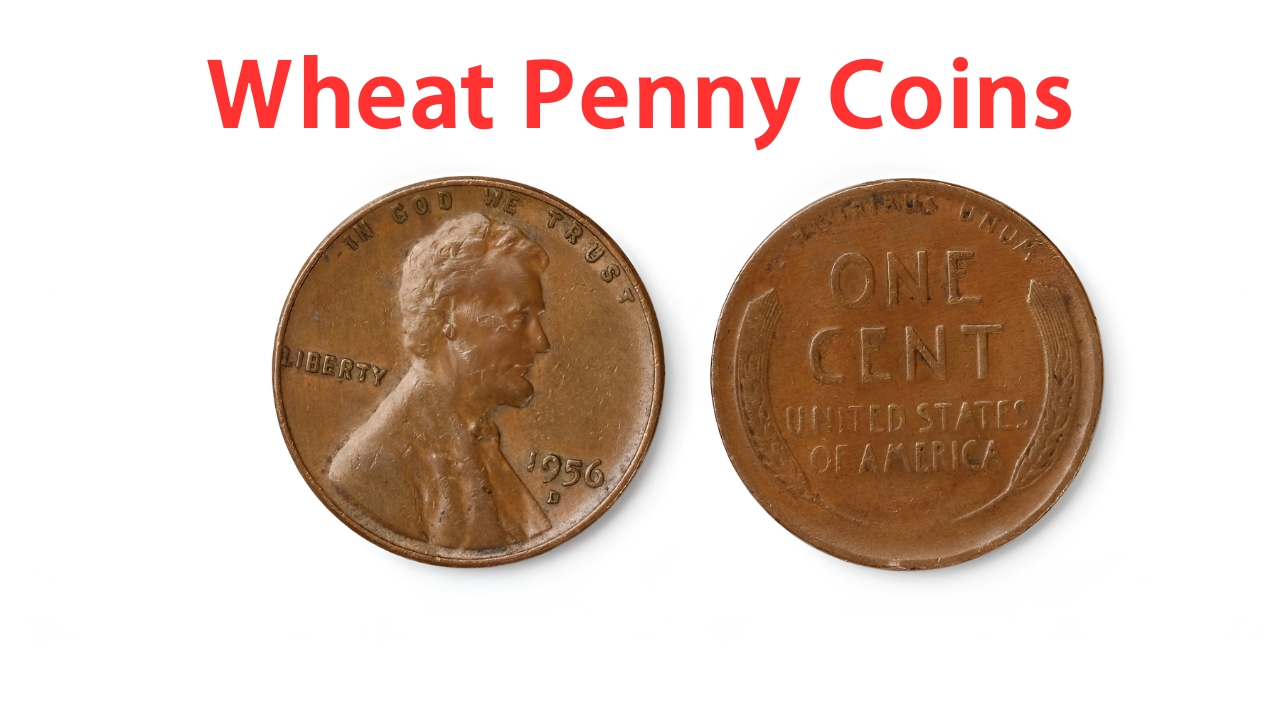Among American numismatic treasures, wheat pennies stand as some of the most accessible yet potentially valuable coins for collectors and treasure hunters alike.
Minted from 1909 to 1958, these Lincoln cents with their distinctive wheat stalks on the reverse have captured the imagination of coin enthusiasts for generations.
While millions of these pennies were produced, certain dates and mint marks have achieved legendary status, commanding prices that can transform pocket change into substantial windfalls for lucky discoverers.
The 1909-S VDB: The Holy Grail of Wheat Pennies
The most famous and valuable wheat penny remains the 1909-S VDB, a coin that represents the perfect storm of historical significance and extreme rarity.
This inaugural year of the Lincoln cent series featured the initials “VDB” prominently displayed on the reverse, honoring designer Victor David Brenner.
However, public outcry over the perceived prominence of the designer’s initials led to their removal partway through production.
The San Francisco Mint produced only 484,000 of these coins before the design change, making them extraordinarily scarce compared to the Philadelphia Mint’s production of over 27 million VDB cents.
This dramatic difference in mintage numbers has created a numismatic legend that continues to drive collector interest more than a century later.
Values for the 1909-S VDB vary dramatically based on condition, with heavily worn examples selling for $700 to $1,000, while well-preserved specimens can command $1,500 to $2,500.
Exceptional mint state examples have sold for over $3,000 at auction, making this penny worth thousands of times its face value.
The coin’s combination of first-year status, design controversy, and low mintage creates an irresistible appeal for serious collectors.
The 1914-D: Denver’s Rare Contribution
The 1914-D represents another cornerstone of valuable wheat penny collecting, with its Denver Mint origin contributing to its substantial premium.
With approximately 1.2 million coins produced, this date ranks among the scarcest regular-issue wheat pennies, though not quite reaching the extreme rarity of the 1909-S VDB.
Market values for the 1914-D reflect its status as a key date, with worn examples typically selling for $200 to $400, while better-preserved coins can reach $800 to $1,200.
Mint state specimens command premium prices, often exceeding $2,000 for coins with exceptional eye appeal and strong strikes.
The coin’s value has shown remarkable stability over decades, making it both a numismatic prize and a solid investment.
The 1914-D’s appeal extends beyond its rarity to encompass its role in completing date and mint mark sets.
Collectors pursuing comprehensive wheat penny collections must eventually acquire this challenging coin, creating consistent demand that supports its strong market values across all grade levels.
The 1922 No D: An Accidental Rarity
Perhaps no wheat penny tells a more fascinating story than the 1922 No D, a coin born from mechanical failure at the Denver Mint.
In 1922, pennies were struck only at Denver, meaning all cents from that year should bear the “D” mint mark.
However, when dies became clogged with grease and debris, some coins were struck without visible mint marks, creating an unintended variety that would become highly sought after.
These “No D” varieties exist in different states of mint mark weakness, with completely missing mint marks commanding the highest premiums.
Strong examples of the 1922 No D can sell for $500 to $1,000 in average condition, while superior specimens have exceeded $2,500 at auction.
The coin’s status as a mechanical error rather than an intentional design creates additional appeal for collectors interested in minting anomalies.
Authentication becomes crucial with 1922 No D pennies, as altered coins sometimes appear in the marketplace. Professional grading services provide essential verification for these valuable varieties, ensuring buyers receive genuine examples of this fascinating minting error.
The 1931-S: Depression Era Scarcity
The 1931-S emerged during the depths of the Great Depression when reduced economic activity led to decreased coin production at many mints.
San Francisco struck only 866,000 wheat pennies in 1931, creating another key date that challenges collectors seeking complete sets.
Values for the 1931-S reflect its semi-key status, with circulated examples typically selling for $75 to $150, depending on specific condition and market factors.
Uncirculated specimens command significant premiums, often reaching $300 to $500 for coins with attractive surfaces and original mint luster.
The coin represents an excellent entry point for collectors interested in valuable wheat pennies without the extreme costs associated with the rarest dates.
The 1931-S demonstrates how historical context influences coin rarity, as economic conditions during the Depression directly impacted production numbers.
This connection between historical events and numismatic scarcity adds depth to the collecting experience beyond simple monetary considerations.
The 1955 Doubled Die: The Error That Captivated America
While technically not as old as other entries on this list, the 1955 Doubled Die Obverse represents one of the most dramatic and recognizable errors in American coinage.
This variety displays obvious doubling on Lincoln’s profile, the date, and the inscriptions “LIBERTY” and “IN GOD WE TRUST,” creating a coin that even non-collectors can easily identify.
The error occurred when a working die received a second impression that was slightly offset from the first, creating the distinctive doubled appearance.
An estimated 20,000 to 24,000 examples entered circulation, primarily through cigarette machine change in the Northeast, before the error was discovered and corrected.
Market values for the 1955 Doubled Die have shown remarkable appreciation over decades, with average circulated examples selling for $1,000 to $1,500, while mint state coins can exceed $2,500.
The coin’s dramatic appearance and compelling backstory have made it a favorite among both serious collectors and casual enthusiasts, supporting strong demand across all condition levels.
These 5 Wheat Penny Coins worth is $260 Million each
These five wheat pennies represent the pinnacle of Lincoln cent collecting, each offering unique stories that combine historical significance with numismatic rarity.
Success in finding valuable wheat pennies requires patience, knowledge, and careful examination of coins that might otherwise be overlooked.
Understanding mint marks, dates, and variety characteristics enables collectors to identify potentially valuable coins in everyday change, estate sales, and coin shops.
While finding these treasures in circulation becomes increasingly unlikely, opportunities still exist for dedicated searchers willing to examine large quantities of older coins.
The wheat penny market demonstrates how American numismatics rewards both historical appreciation and careful collecting, turning small investments in knowledge into potentially significant financial discoveries.










